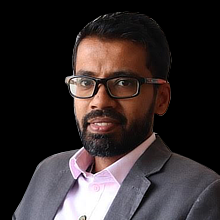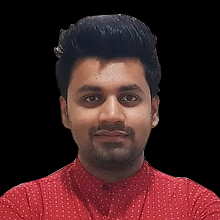According to Bain, IoT is predicted to double in growth to about $520B in 2021 in comparison to where it stood in 2017. There is a flourishing demand and interest in remote monitoring and real-time monitoring, which makes it one of the fastest-growing use case categories in the industry.
In this talk, we will demonstrate an IoT device that was built from the ground up, using off-the-shelf components, for real-time monitoring purposes in the AgTech industry. We will demystify and simplify IoT by sharing our learnings from building such a device from scratch. In addition, we will throw-in some thoughts on the sensors and architecture to adopt, and how one can use the current cloud services in developing an offline or real-time monitoring system. These ideas can be cross-pollinated for any application. When combined with open source Machine Learning (ML) libraries, you will have a system that works seamlessly for your deployment needs and help in weaving a great story, to draw insights and inferences or to make decisions.
Structure of the Talk:
Introduction to IoT
Answering the big question: DIY or Outsource?
Architecture and Platforms: Which one to choose?
India Solutions: Building Prototype from Off-the-shelf Components
How to adapt and adopt for your application
Live Demo: Imaging combined with Machine Learning on cloud (AWS)
Open Box: Dissecting into an IoT box to show the inside
Key Takeaways:
The following will be the key takeaways of this talk: –
Demystifying and Simplifying IoT learn to unleash its potential for your application
How IoT goes beyond home automation and is for a practical application in any industry
Understanding the different IoT devices available in the Indian Market and how to choose one that is most appropriate for your application
How to connect the IoT to the cloud platform such as Amazon Web Services (AWS)
How to use open source and readily available code for sensor-gateway communication, and for automatically processing the images/data on the cloud
Targeted Audience:
SPEAKERS

Praveen Pankajakshan
Praveen Pankajakshan is currently the Principal Data Science Manager at Corteva AgriscienceTM, Agriculture division of DowDuPont, India. He has worked as a researcher for more than 15 years in the application of Signal Processing, Image Processing and Machine Learning to Electrical Machinery, Power Systems, Microscopy, Healthcare, and recently in the Energy industry.
He received his B.S. Electrical Engineering from IIT Roorkee, his M.S. Electrical Engineering from Texas A&M University, College Station and his PhD in Applied Mathematics and Computer Science from INRIA, France. He has worked as a researcher with the Pasteur Institute on computational methods to achieve nanoscopic resolutions in light microscopes.
As a Technical Manager with Samsung Advanced Institute of Technology managing, he was guiding a team on detecting Cardiac Arrhythmias in portable ECG device and Samsung Tablets. Prior to joining Corteva, he was a Data Analytic Scientist with the Computational Center of Expertise in Shell Technology Center Bangalore.
He has, to his credit, several peer-reviewed published articles in international conferences and journals, and US patents. He is a senior member of the IEEE. He is a trainer of Heartfulness Meditation and is also a long-distance runner.

Harshit Kumar Lohani
Harshit Kumar Lohani currently works as a data scientist in DowDuPont. He received his Masters degree in Embedded System Technology from SRM University, Chennai. Prior to that he graduated with his Bachelor’s degree in Electronics and Telecommunication Engineering from Sathyabama University, Chennai.
His primary research interests are in IoT and Extreme Learning Machine (ELM) on which he has published in Springer. Before his current role, he was also the Embedded System Lead for Infi-Alpha Hyperloop System, which was developed as a prototype of the original Hyperloop-1 concept. In his free time, he is an avid explorer, biker and photographer. Harshit hails from Keonjhar, a small town in Odisha, India.
